- April 29, 2024
-
-
Loading

Loading
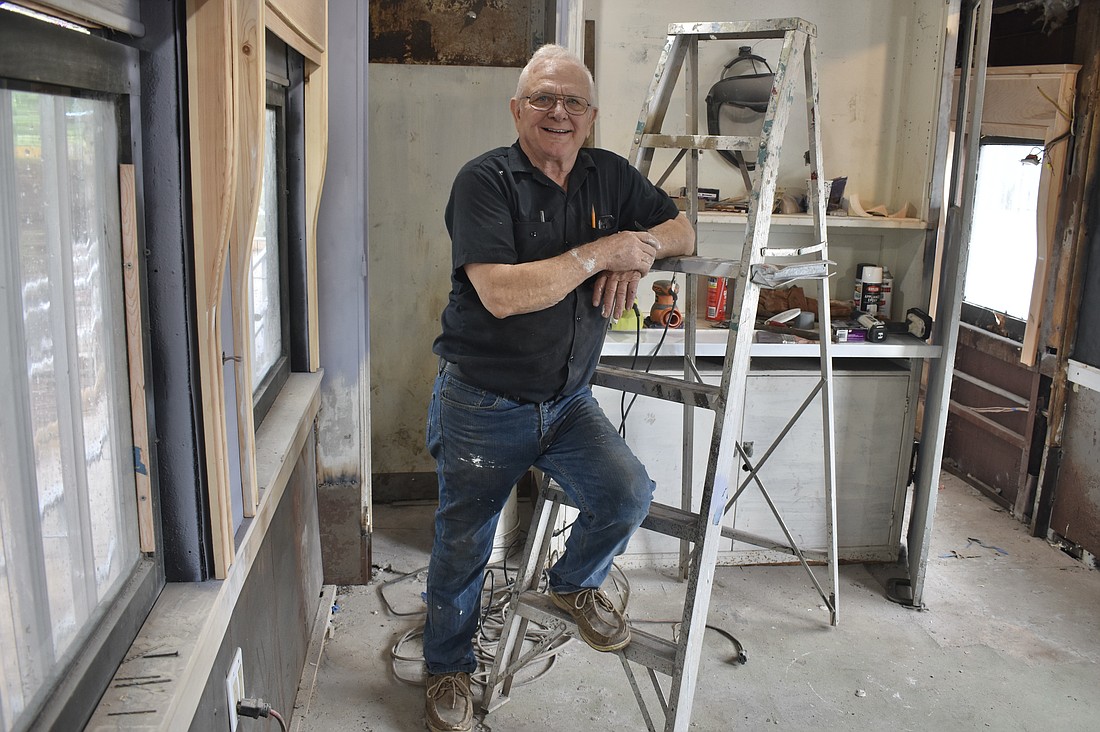
When Bob Horne purchased John and Mable Ringling’s private railroad car for $1 to save it from becoming scrap metal, he expected that many people would climb on board to help restore it.
Twenty years later, the project still has a long way to go.
The goal is a museum that re-creates, with as much historical accuracy as possible, the living quarters the Ringlings occupied as they traveled across the country.
The reality, at the moment, involves upholstery to fix, walls to coat, floors to even out and much more. But Horne isn’t deterred.
The 81-year-old said there’s nothing in his life that he hasn’t been enthusiastic about.
Every Saturday, save for unusual circumstances, you’ll find him at work inside the rail car that sits on a train track off Fruitville Road, adjoining the three restored Ringling train cars that make up his restaurant and circus museum, Bob’s Train.
He said the project will continue until he’s 108, and even after he’s gone, through a nonprofit he plans to establish.
And yes, he’s confident that he will live to be 108. He said longevity has everything to do with staying active, something it appears Horne has never ceased to do.
Horne is the rare individual that might be called a master of all trades, boasting 21 licenses, as a driver, lifeguard, chauffeur, heavy equipment operator, military electronics, poison handler, PADI scuba instructor, first responder medical, first responder federal disaster and pilot.
He’s also a veteran of the Navy, and was formerly involved in theater, in roles like set design and technical direction.
And fortunately for the Ringlings’ old rail car, one of his licenses is a general contractor.
Most restorations Horne performs himself, using his skills of carpentry and welding and the profits from his restaurant, although he has some volunteers and receives occasional small donations.
Nonetheless, many people that start working on the train car, don’t finish the journey.
“A lot of people come here thinking it’s got to be easy,” he said. “And then you find out nothing is easy on a railroad car.”
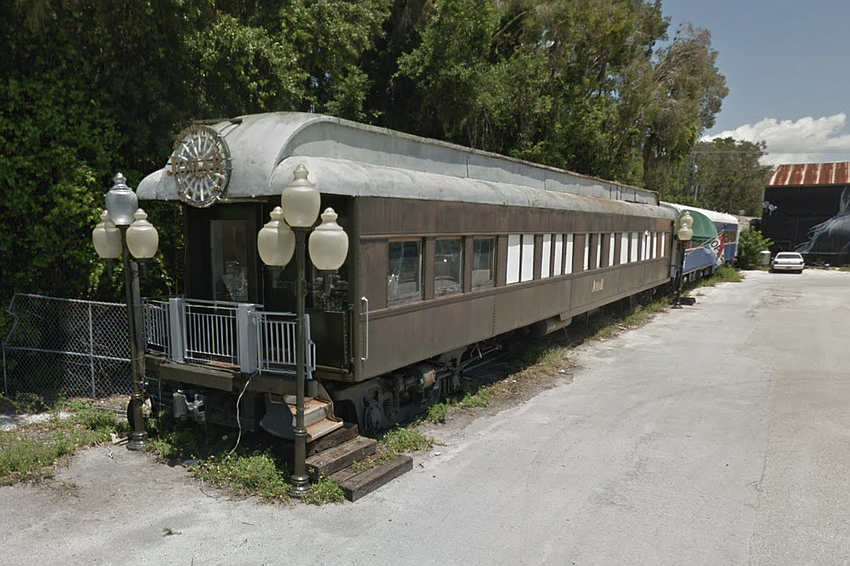
The 80-ton, 80-foot Pullman rail car, which was built in 1917, has undergone significant repairs since it sat and rusted for years on a property off Central Avenue, which businessman Harvey Vengroff acquired before informing Horne about the rail car.
At that time, there were no windows, there was no roof, and portions of the floor had rotted out.
Today, there is still work to be done.
Ragged upholstery damaged by raccoons hangs from the ceiling, graffiti is still prominently inscribed in a bedroom, and numerous details need filling in.
In fact, before the project is complete, the car, which has a slight tilt to it, will have to be leveled in order to fill in the concrete flooring, with two levelers each weighing 40 tons.
The most the average visitor will initially glimpse of the setting’s former glory might be several prominently displayed photographs, but Horne works with a clear image in his mind. His reference points are the car’s 47-page contract as well as engineering drawings and photos.
As a result, the restoration will offer a glimpse into the life of one of the richest men in America and an environment that also housed individuals like Thomas Edison, Warren G. Harding and “The Greatest Show on Earth” director Cecil B. DeMille.
True to the original layout and luxurious lifestyle of the Ringlings, every chair will feature a call button. The Ringlings used these buttons to summon their butlers, one of whom was always on duty to offer 24-hour-a-day service. Horne muses that visitors will find a straight razor in John Ringling’s bathroom, while a cover for one of the air vents just beneath the ceiling, will open. Horne has even managed to locate one of the rail car’s original light fixtures. He says a 3D printer will offer a means for creating tape for pinstriping.
One discovery that excited Horne was the find of two of the original stained glass windows that had been used on doors in the dining room and living room.
The windows had been incorporated into a Ringling Circus horse barn, which was purchased by a local rancher and used to store cars for 40 years. As the barn was being torn down, Horne visited the site and found the windows.
Although they are marked with BB gun holes and are now too fragile to be returned to the car, one of them is on display in the restaurant.
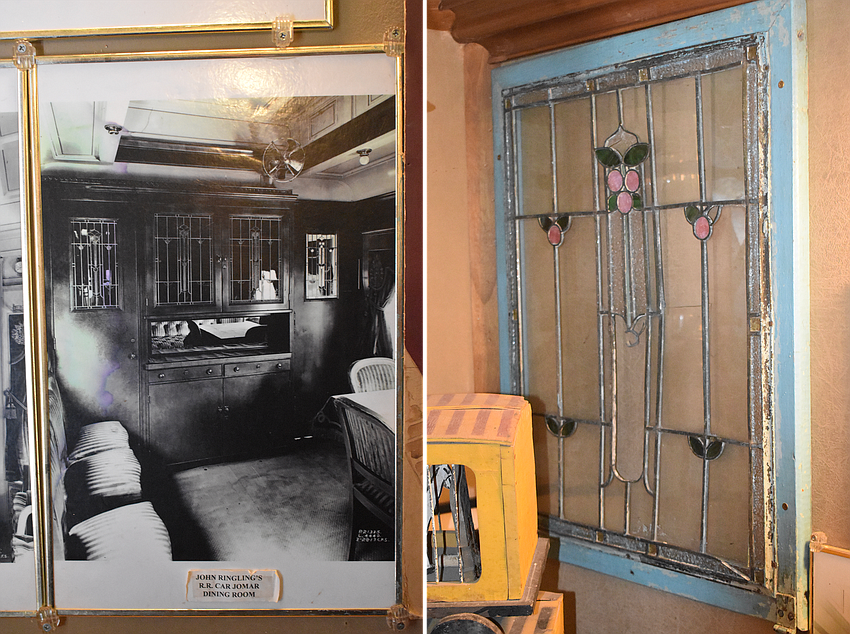
No problem. Horne will create his own. A look at a model of a steam engine just beside the rail car demonstrates his resourcefulness.
26 feet long and 14 feet high, the model is made entirely out of scrap metal, with a cowcatcher formed from what used to be his daughters’ bunk beds and the body made from a trash chute he received through a donation, among other items.
Yet there’s more to the experience of the Ringling rail car restoration and Bob’s Train, than the tangible. Horne’s stories bring another flicker of life to the Ringlings’ former abode, sometimes drawing from firsthand testimony he has heard.
“(John Ringling) was highly intelligent, so he turned the whole thing over to his wife to let her make the decisions; she had to live in it too,” he said.
He said new window frames of unpolished wood, which have been added to the dining room and will be added to all other rooms, will match what Mable Ringling envisioned, once they are painted over.
“It’s the only wood in the whole car, and Mable specified she loved pastels, but she hated polished wood and that all the wood be painted to match whatever room it was in.”
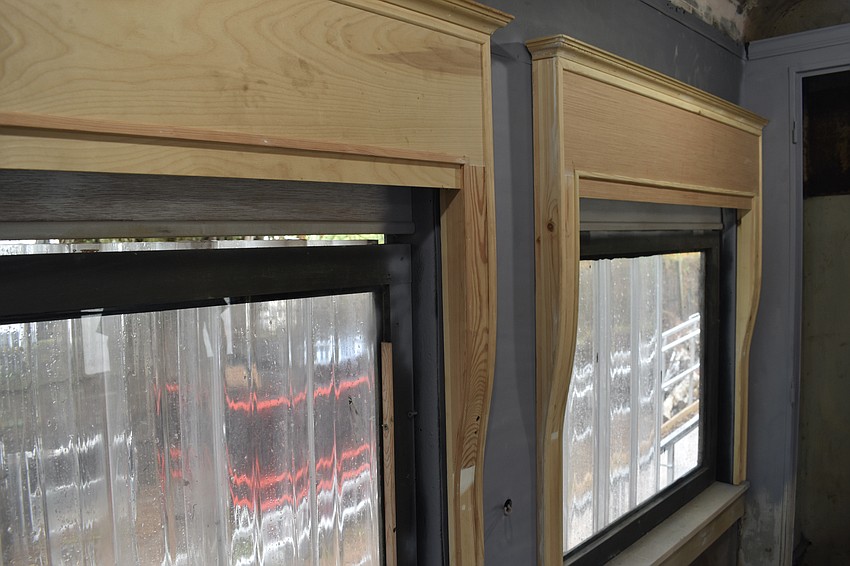
Horne also sees a side of John Ringling that others may not.
“John started out as a clown,” he said. “And he always had a sense of humor, although it doesn’t look like it in all the photos.”
Horne said he’s been told by several people that when conversation began to run dry on the train, Ringling would begin sniffing the air out the window and then declare the number of miles the train was located from a certain town — only to be proven right by an upcoming sign.
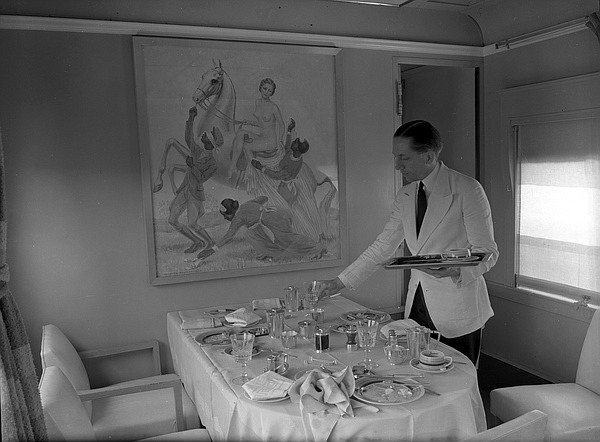
The feat would impress the guests, who didn’t realize Ringling had managed another somewhat impressive feat of fully memorizing the railroad timetables and schedules he kept on his bookcase, to help him manage re-routings that might occur.
Indeed, Horne brings an overflowing knowledge about Sarasota’s history and circus history. He doesn’t say whether it is because he married into a circus family, with his father-in-law having been chair of the Ringling Circus under John Ringling North.
“When you’re a Renaissance man, you’re interested in anything and everything,” he said.
Can he find the volunteers he seeks, who would likewise be fascinated with the project?
Whatever the case may be, Horne has made up his mind where he’s headed.
“I’m here every Saturday. I’m trying to get things done,” he said. “So if I get here every Saturday, I can get something done. And progress is going up, not down.”